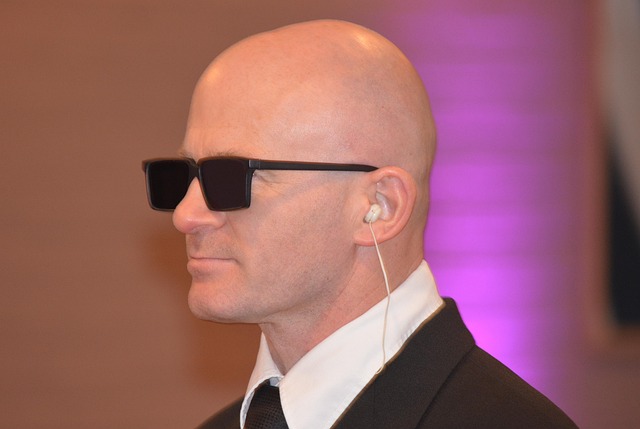Executive protection for high-stakes events is a specialized field focused on safeguarding key individuals like executives or VIPs during significant gatherings, such as international conferences and political summits. Professionals implement comprehensive strategies including threat assessment, risk management, and discreet surveillance. Discretion is crucial, employing unmarked vehicles, well-trained personnel, and advanced technology to maintain an uninterrupted experience. Effective communication, coordination, and post-event reviews are key to success, ensuring tailored solutions and continuous improvement in the face of evolving threats.
“In the realm of high-stake events, ensuring the safety and security of key figures is paramount. ‘Executive Protection for High-Stake Events’ delves into strategic approaches that maintain focus on the event while safeguarding participants. From understanding nuanced executive protection to implementing discreet security measures, this comprehensive guide explores effective strategies. We’ll navigate identifying potential threats, enhancing communication, and post-event analysis, providing insights crucial for seamless, secure events.”
Understanding Executive Protection for High-Stake Events
Executive Protection for high-stake events is a specialized field focused on safeguarding key individuals, often high-profile executives or VIPs, during significant gatherings or activities. These events, whether they are international conferences, sports tournaments, or political summits, attract substantial media attention and pose potential security risks. The primary goal of executive protection in such scenarios is to ensure the safety and confidentiality of these individuals without disrupting the event’s flow.
It involves a comprehensive strategy that includes threat assessment, risk management, and discreet surveillance. Professionals in this domain meticulously plan and coordinate with event organizers, local authorities, and clients to create secure environments. By employing non-intrusive techniques, they maintain a low profile while implementing measures like advanced communication systems, secure transportation, and personalized safety protocols tailored to each client’s unique needs.
Identifying Potential Threats and Risks
Identifying potential threats and risks is a critical step in developing effective non-intrusive protection strategies for high-stakes events. Executive protection professionals must consider a range of factors, from physical security to digital surveillance, to ensure the safety and well-being of their clients. In the context of these high-profile events, where prominent figures are in the spotlight, assessing vulnerability is paramount. By conducting thorough risk assessments, teams can anticipate potential hazards such as stalking, assault, or even targeted cyberattacks.
Understanding the event’s landscape—its location, attendees, and potential disruptions—is essential. This involves researching past incidents, understanding local security infrastructure, and leveraging intelligence networks to identify any red flags. Moreover, with technology playing a significant role in modern events, protecting against digital threats becomes paramount. This includes implementing robust cybersecurity measures, monitoring online activities for suspicious behavior, and ensuring all systems are secure from unauthorized access.
Implementing Discreet Security Measures
In the realm of executive protection for high-stakes events, discretion is key. Discreet security measures allow for a seamless experience without compromising safety. These strategies are meticulously designed to maintain focus on the event while ensuring the well-being of high-profile individuals. By employing unmarked vehicles, trained personnel who blend in with the crowd, and utilizing advanced technology that remains invisible to the untrained eye, security can be enhanced without drawing unwanted attention.
Such measures include the use of biometric access control, silent alarm systems, and real-time monitoring devices that provide immediate alerts without causing a scene. This tactful approach ensures that high-risk events—from red carpet arrivals to exclusive conferences—proceed smoothly while benefitting from robust security protocols. It’s a delicate balance between openness and privacy, where every detail is carefully considered to keep risks at bay.
Communication and Coordination Strategies
Effective communication and coordination are vital components of successful executive protection for high-stakes events. Before, during, and after the event, clear and concise messaging is essential to ensure all stakeholders—from security personnel to clients—are aligned and informed. This includes establishing dedicated communication channels, such as encrypted text messages or secure phone lines, to facilitate real-time updates without alerting potential threats.
Strategic coordination involves meticulously planning and rehearsing communication protocols, ensuring that every team member understands their role and responsibilities. Regular briefings and debriefings help maintain situational awareness, allowing for swift adjustments should unexpected challenges arise. This holistic approach not only safeguards the event’s success but also reinforces a sense of confidence and security among all participants.
Post-Event Review and Continuous Improvement
After any high-stakes event requiring executive protection, a thorough post-event review is essential. This process involves evaluating every aspect of the security measures implemented, from pre-event planning to on-site operations and post-event follow-ups. By critically analyzing what worked well and identifying areas for improvement, organizations can enhance their strategies for future events. Continuous learning and adaptation are key in executive protection for high-stakes events, as each event presents unique challenges that demand tailored solutions.
The review should encompass a wide range of factors, including threat assessment, risk management, communication protocols, and the overall effectiveness of the protection team’s actions. This reflective practice allows security professionals to refine their techniques, ensuring they remain at the forefront of industry standards. By fostering a culture of continuous improvement, executive protection teams can better prepare for the evolving nature of potential threats, providing unparalleled safety and security for high-profile individuals during significant events.
Executive protection for high-stakes events requires a comprehensive, non-intrusive approach that focuses on maintaining safety while preserving the experience. By understanding potential threats, implementing discreet security measures, fostering open communication, and conducting thorough post-event reviews, organizers can ensure the well-being of key figures without compromising the event’s integrity. This strategic approach not only safeguards high-profile individuals but also enhances the overall security landscape for all attendees, making it an indispensable component in the world of executive protection.
